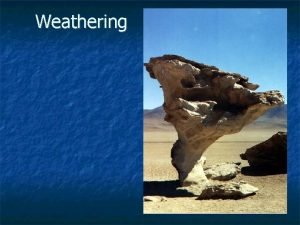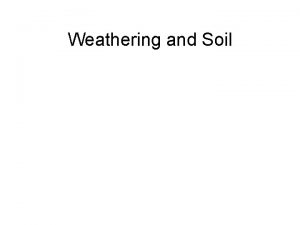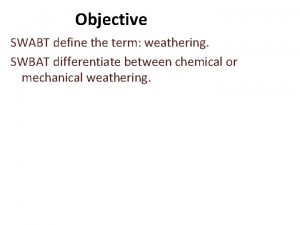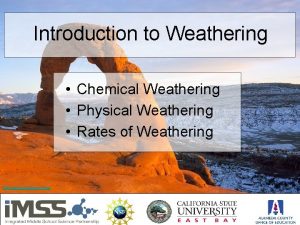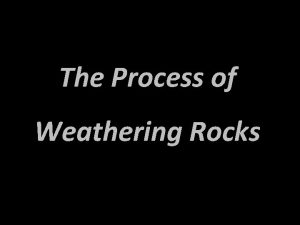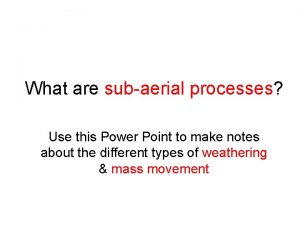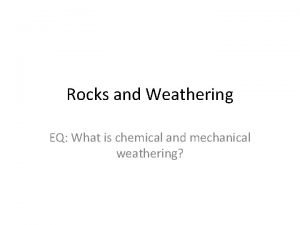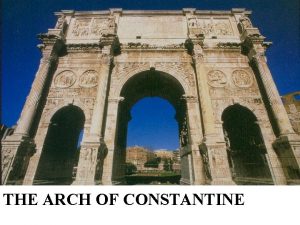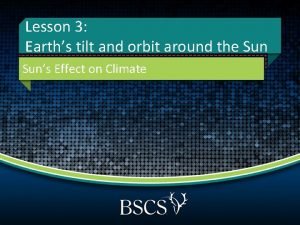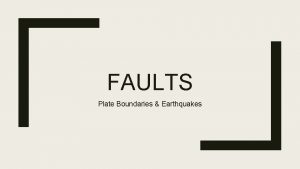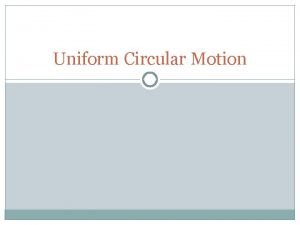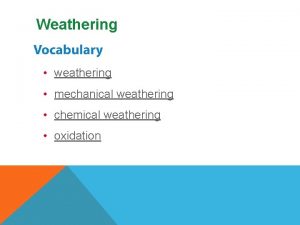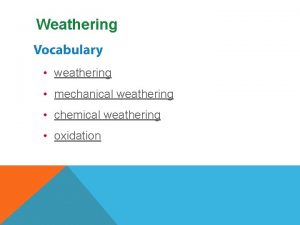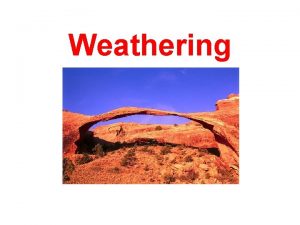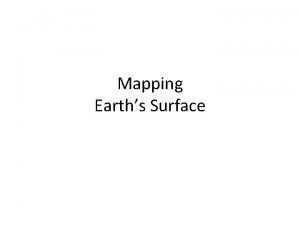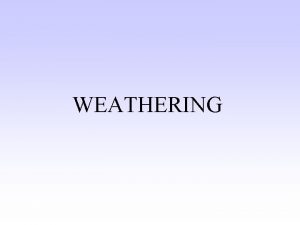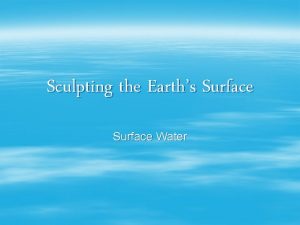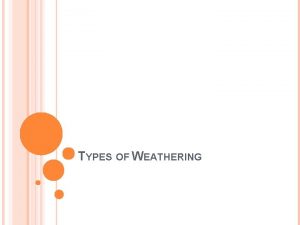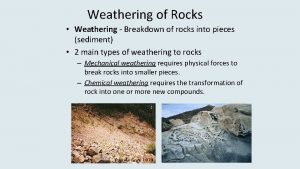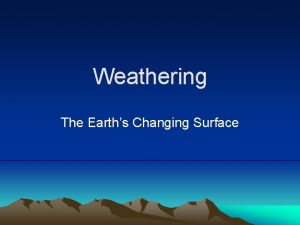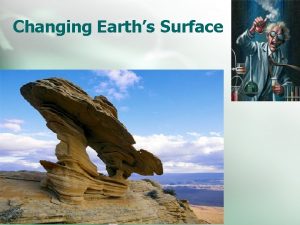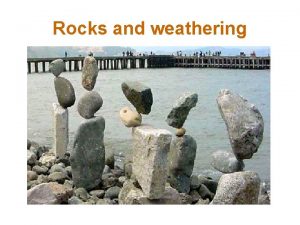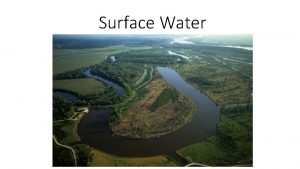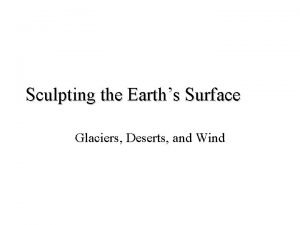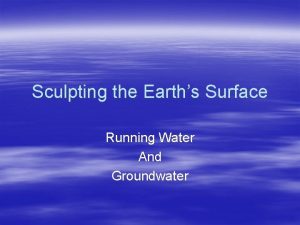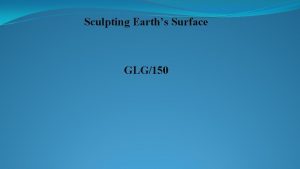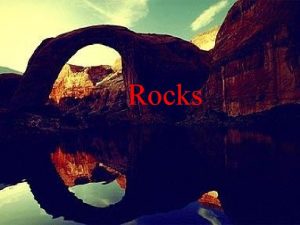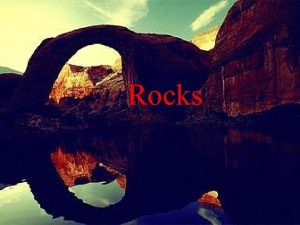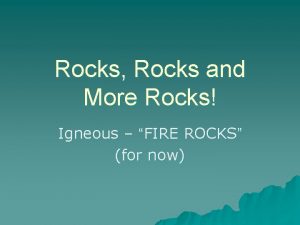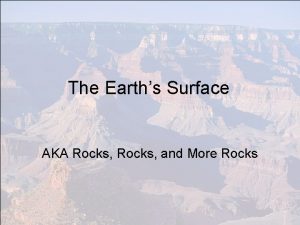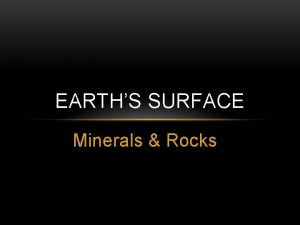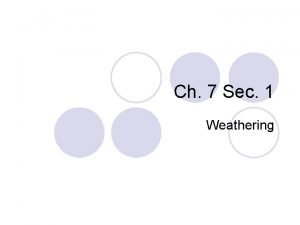Sculpting Earths Surface Rocks Cycle Weathering Mass Movement









































- Slides: 41

Sculpting Earth’s Surface Rocks Cycle, Weathering, Mass Movement, Erosion, Transportation, Deposition, How Earth Works Honors Science Jodi Lock; Holicong Middle School Pearson Earth Science; 3. 1, 5. 3, 6. 2, p 208 -209 G 2

Warm up Look at the objects on your table. 1. How are they similar? 2. How are they different? 9/16/19

So. A ROCK IS • A naturally occurring, solid, mixture of one or more minerals and/or organic matter Rocks are • Classified into 3 groups based on how they are formed: • igneous, sedimentary, metamorphic

• Texture and composition are used to classify rocks • They indicate how the rock formed This Photo by Unknown Author is licensed under CC BY-SA-NC

2 Types of Forces Create Rocks Constructive Destructive • Builds something up or creates something new • Breaks something down or destroys something Can something be BOTH? How? Why?

The Rock Cycle The rock cycle shows that rocks continually change from one type to another The elements in rock are not created or destroyed - they are constantly recycled.

Igneous Rock Form when magma cools and hardens. Shiny and glasslike Holes and spaces if gas is trapped Basalt and Granite

What is the difference between magma and lava?

Sedimentary Rock Lithification of particles (sediment) Contain sand, pebbles, stones; only rock that may contain fossils Most have layers or strata

Sedimentary Processes 1. Weathering (breaking down rock) 2. Erosion (movement of sediments) 3. Deposition (collection of sediment) 4. Lithification (gluing together)

Metamorphic Rock Formed under the surface of the Earth by extreme heat and pressure Ribbon-like layers or maybe shiny crystals Slate, Marble

Metamorphism Think about CAKE BATTER in an oven… Formed by tremendous heat & pressure, and chemical reactions inside the crust. Formed from all three rock types.

Now… Rock Cycle Interactive Work time • Cookie Mining Conclusion • G 2 Review • G 2 Choice

Warm up Take the cards out of your envelope and put them into an example of the rock cycle. Discuss the steps and parts with your partner. 9/17/19



WEATHERING ØBreaking down or decomposition of rock ØAt Earth’s surface ØDetermined by rock type & climate Ø 2 processes; work together ØMechanical ØChemical

Now… G 1 Quiz in Canvas Work time • Finish Rock Cycle Interactive • Cookie Mining Conclusion • G 2 Review • G 2 Choice

Warm up. . . 9/18/19 • What is a chemical change? • What is a physical change? This Photo by Unknown Author is licensed under CC BY-SA-NC


Mechanical Weathering • Physical forces change the rock • No change in composition • Increases surface area of rock • Frost Wedging • Thermal Expansion • Exfoliation • Biological Activity

Chemical Weathering • Chemical forces change COMPOSITION or rock • Dissolution • Hydrolysis • Oxidation


Erosion • Wearing away AND movement of rock particles • 4 “Agents” of erosion Gravity Water Glaciers Wind

Deposition This Photo by Unknown Author is licensed under CC BY-SA • Weathered & eroded material is deposited someplace else • When moving water slows, particles settle This Photo by Unknown Author is licensed under CC BY-SA-NC This Photo by Unknown Author is licensed under CC BY-SA • Which particles will settle first? Why? ? This Photo by Unknown Author is licensed under CC BY-SA-NC

Nile River Delta Lateral moraine Cape Cod

Now… (in your Weathering Module) • Consider the words chemical and mechanical • Using the items in the room, perform “mechanical weathering” or “chemical weathering” on the tablet you have been given • Observe and make notes in your part 1 data chart. • Add data to the collaboration space Process Name Definition Activity Performed • One pair per variable Mechanical Weathering Chemical Weathering Result Examples in nature

Warm up… 9/19/19 1. What is the difference between weathering & erosion? 2. What is the difference between chemical & physical weathering?

Today… • Complete parts 2 -3 of the Weathering Module • Plan Part 4 -your Flip. Grid example • Design a demonstration to illustrate one of the forces of weathering or an agent of erosion. • Bring materials and complete the demo • Filming a Flip. Grid to share your work. • Grid Code: 4171 a 2 • Password: Lock. Science

Warm up… 9/20/19 1. Why do we have so many potholes here! 2. What is the main agent for erosion on Earth? 3. How does mechanical weathering impact the rate of chemical weathering? This Photo by Unknown Author is licensed under CC BY-SA This Photo by Unknown Author is licensed under CC BY-NC-ND

Today… • Continue parts 2 -3 of the Weathering Module • Work on Part 4 -your Flip. Grid example • Grid Code: 4171 a 2 • Password: Lock. Science • Due 9/24 • Upload to Canvas

Warm up… 1. Why are these old tombstones now impossible to read? 2. Why do they lean? 3. What is the initial force erosion? 9/23/19

Today… • Read “Rate of Chemical Weathering” • With you partner, determine what you will test • Complete the first 2 rows of the CER box AND your procedure • Work time • • • G 2 Choice items G 2 Review Unfinished Required items Weathering Flip. Grid Rate of Chemical Weathering Questions

Warm up… 9/24/19

Today… • Complete “Rate of Chemical Weathering” • Set/perform up your experiment • Collect Data • Add data to collaboration page • Work on assignment • Work time • G 2 Choice items • G 2 Review • Unfinished Required items • Weathering Flip. Grid

Warm up… • • Read “Sand Wars” Read the 3 claims provided Mark TRUE or FALSE Provide supporting evidence 9/25/19

Today… • What can be done to stop erosion at a local park? • Work with your partner • Follow the directions to collect and analyze data • Provide information for the conclusion • Work time • G 2 Choice items • G 2 Review • Unfinished Required items • Begin comparing Rate of Weathering and Sand Wars activities

Warm up… 1. What are some natural factors that may affect erosion? 2. What are some man-made factors that may affect erosion? 3. How does agriculture impact erosion? 9/26/19

Today… • Sculpting Earth’s Surface Writing Prompt • Determine which prompt you will write • Organize your thoughts • Begin writing • Work time • G 2 Choice items • G 2 Review • Unfinished Required items • Begin comparing Rate of Weathering and Sand Wars activities

Warm up… • I have…who has… • Read your card • Determine what might describe your “I have” • Determine what your “who has” describes • Get in line in the correct order! 9/27/19

Today… • Conferences • Bring any paper items you have • G 2 Conclusion Writing This Photo by Unknown Author is licensed under CC BY-SA-NC
 Metamorphic rocks
Metamorphic rocks Igneous metamorphic and sedimentary
Igneous metamorphic and sedimentary Subtractive sculptures
Subtractive sculptures Llcr formula
Llcr formula How to drape a client for a shampoo
How to drape a client for a shampoo Mechanical and chemical weathering examples
Mechanical and chemical weathering examples Type of weathering
Type of weathering Three types of weathering
Three types of weathering Mechanical and chemical weathering
Mechanical and chemical weathering Carbonation of rocks
Carbonation of rocks Biological weathering
Biological weathering Weathering rocks
Weathering rocks Types of weathering of rocks
Types of weathering of rocks Extrusive rocks and intrusive rocks
Extrusive rocks and intrusive rocks Rhyolite
Rhyolite The earth's layers foldable
The earth's layers foldable Earths roation
Earths roation Whats a natural satellite
Whats a natural satellite Home sweet biome crossword
Home sweet biome crossword Most common elements in the earth's crust
Most common elements in the earth's crust How thick is the earths crust
How thick is the earths crust Whats earths moon called
Whats earths moon called Whats the thickest layer of the earth
Whats the thickest layer of the earth Earths early atmosphere contained
Earths early atmosphere contained Earth layer foldable
Earth layer foldable Earths major crustal plates
Earths major crustal plates Earths orbit seasons
Earths orbit seasons Brown earths
Brown earths Study of earth's physical features
Study of earth's physical features Earths honey
Earths honey Whats the name of earths moon
Whats the name of earths moon Continental drift theory
Continental drift theory Earths crust
Earths crust Earths interior
Earths interior What does the earths tilt cause
What does the earths tilt cause Atmospheric layers definition
Atmospheric layers definition What is this shape
What is this shape Arch of constantine frieze
Arch of constantine frieze What does earths tilt do
What does earths tilt do Earths boundaries
Earths boundaries Earths 4 spheres
Earths 4 spheres Uniform circular motion lab answer key
Uniform circular motion lab answer key





